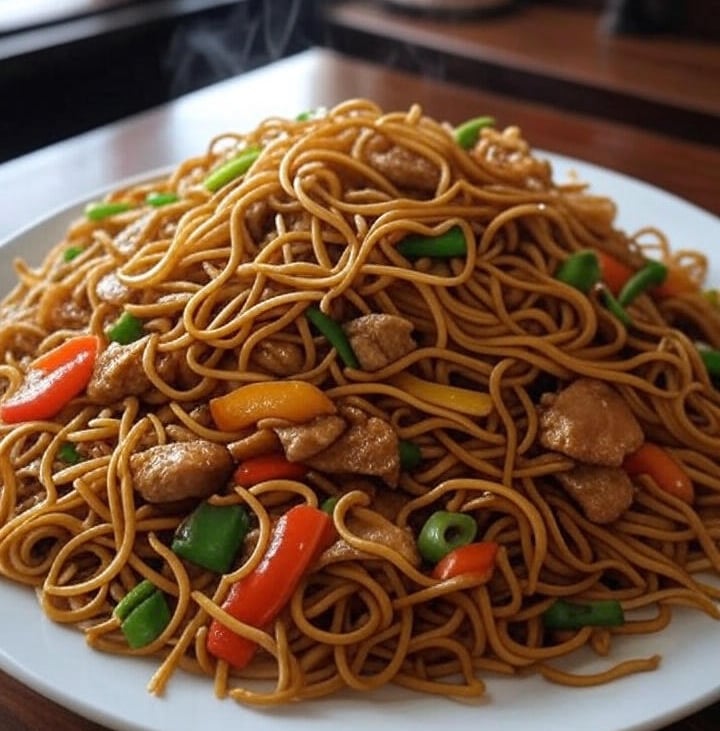Welcome to Noodles of Asia ! - A Woke Noodle Blog
Delving into Lo Mein: A Journey Through China’s Savory Noodle Dish


Hey there, noodle enthusiasts! If you've ever enjoyed a plate of tender, wheat-based noodles tossed in a savory sauce with veggies and meat, you’ve likely tasted lo mein. These flavorful strands are a beloved staple in Chinese cuisine, cherished for their hearty texture and adaptability. Whether served as a comforting main dish or a quick side, lo mein satisfies the soul. In this post, we’ll explore its origins, history, some fascinating facts, and a few famous recipes to inspire your next culinary adventure. Let’s dig in!
Origins and History of Lo Mein
Lo mein, meaning "tossed noodles" in Cantonese, is believed to have originated in southern China, with roots tracing back to the Guangdong province during the Qing Dynasty (1644–1912). The dish evolved from the tradition of stir-frying wheat noodles, a technique that became popular as trade introduced new ingredients and cooking methods. By the 19th century, Chinese immigrants brought lo mein to the United States, where it gained fame in Chinatowns and Americanized versions emerged. Today, it remains a global favorite, blending authentic flavors with creative twists worldwide.
Interesting Facts About Lo Mein
Lo mein isn’t just food—it’s a cultural icon! Here are some intriguing tidbits:
Regional Variations Galore: From Guangdong’s classic pork and veggie lo mein to Shanghai’s seafood variations, and the Americanized chicken lo mein, each region adds its own flair.
Noodle-Making Craft: Traditionally, lo mein noodles are made from wheat flour, water, and salt, boiled and then stir-fried, giving them a soft yet slightly chewy texture.
Cultural Fusion: In the U.S., lo mein has inspired fusion dishes like lo mein with Italian pesto or spicy Szechuan influences, reflecting its adaptability.
Quick Meal Appeal: Known for its fast preparation, lo mein is a go-to for busy households, often customized with whatever ingredients are on hand.
Historical Roots: Early Chinese texts mention stir-fried noodle dishes, hinting at lo mein’s long-standing role in Cantonese culinary heritage.
These facts showcase lo mein’s journey from a regional specialty to a worldwide culinary staple.
Famous Lo Mein Recipes
Lo mein’s charm lies in its versatility. Here are some iconic recipes, from comforting classics to creative twists. (Note: These are overviews—adjust to taste and check full recipes online for details.)
Chicken Lo Mein: Stir-fried noodles with soy sauce, chicken, bell peppers, and carrots—a crowd-pleasing classic.
Beef Lo Mein: Tender beef strips with noodles, broccoli, and a savory oyster sauce blend—rich and satisfying.
Shrimp Lo Mein: Succulent shrimp with noodles, snap peas, and a light garlic-soy sauce—delicate yet flavorful.
Vegetable Lo Mein: A vegan option with mushrooms, cabbage, and bean sprouts, tossed in sesame oil and soy sauce.
Pork Lo Mein: Sliced pork with noodles, scallions, and a dark soy sauce mix—a traditional Cantonese favorite.
Seafood Lo Mein: A mix of shrimp, squid, and noodles in a ginger-infused broth—luxurious and aromatic.
For a hands-on challenge, try making lo mein at home: Boil fresh or dried wheat noodles, stir-fry with veggies and protein, and toss with your favorite sauce—or use pre-made noodles for speed.
Wrapping It Up
Lo mein noodles are more than just food—they’re a bridge from ancient Cantonese traditions to modern global kitchens, with endless variations to explore. Whether you’re craving a hearty plate on a cool evening or a quick meal in warm weather, lo mein delivers. Next time you’re at a Chinese restaurant or in your kitchen, give one of these recipes a try. What’s your favorite lo mein style? Share in the comments—I’d love to hear! Until next time, happy slurping! 🍜
